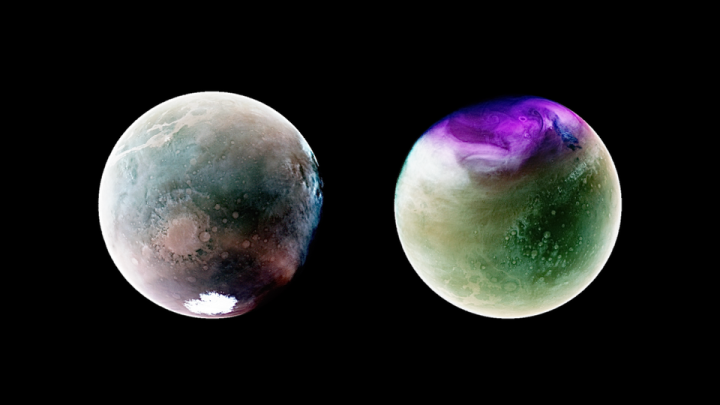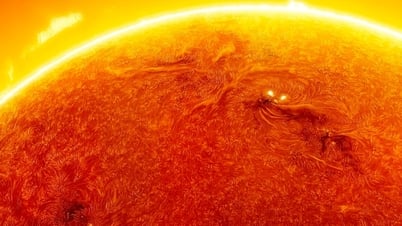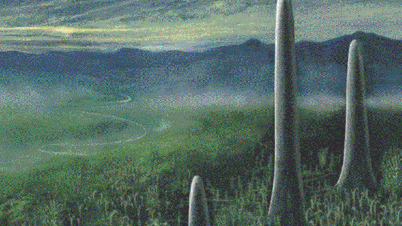Astronomers used NASA’s Mars Atmosphere and Volatile Evolution (MAVEN) spacecraft to capture new images of the red planet, according to Space magazine. The spacecraft is equipped with an instrument called the Ultraviolet Spectrograph (IUVS), which can measure wavelengths in the range of 110-340 nm. This is the range outside the visible spectrum.
The purple areas of the image represent ozone in Mars' atmosphere, while the white and blue areas represent clouds or haze. The planet's surface appears brown or green in the new images.
“ By observing the planet in ultraviolet wavelengths, scientists can better understand Mars' atmosphere and study surface features ,” NASA said on June 23.

NASA's MAVEN spacecraft captured this image of Mars in ultraviolet light. Photo: NASA.
The images, shared by NASA on June 22, were taken when the planet was near opposite ends of its orbit around the sun. Like Earth, Mars rotates on a tilted axis, causing it to experience four distinct seasons.
However, the seasons on Mars are longer than on Earth because one year here is equal to two years on our planet.
The first image, taken in July 2022, shows Argyre Basin, one of Mars’ deepest craters, covered in clouds. Warmer summer temperatures here cause the south polar ice caps to shrink, releasing carbon dioxide and thickening the atmosphere.
“ Studying the atmosphere helps scientists better understand how the climate, liquid water and habitability on Mars formed ,” NASA added.
Meanwhile, the second image was taken in January when the northern hemisphere of the “red planet” passed the furthest point in its orbit around the Sun, causing a lot of white clouds in the northern polar region. Ozone accumulation can also be seen through the photos.
However, the increase in water vapor in the Martian spring will destroy this ozone patch in the northern hemisphere.
(Source: Zing News)
Useful
Emotion
Creative
Unique
Source










































































































Comment (0)